Related Research Articles
Free jazz or Free Form in the early- to mid-1970s is a style of avant-garde jazz or an experimental approach to jazz improvisation that developed in the late 1950s and early 1960s when musicians attempted to change or break down jazz conventions, such as regular tempos, tones, and chord changes. Musicians during this period believed that the bebop and modal jazz that had been played before them was too limiting, and became preoccupied with creating something new. The term "free jazz" was drawn from the 1960 Ornette Coleman recording Free Jazz: A Collective Improvisation. Europeans tend to favor the term "free improvisation". Others have used "modern jazz", "creative music", and "art music".
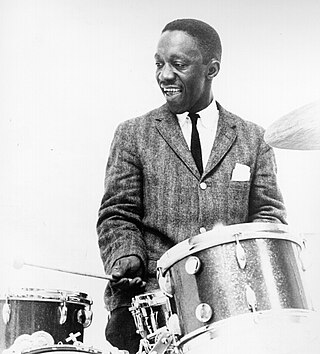
Arthur Blakey was an American jazz drummer and bandleader. He was also known as Abdullah Ibn Buhaina after he converted to Islam for a short time in the late 1940s.

Acid jazz is a music genre that combines elements of funk, soul, and hip hop, as well as jazz and disco. Acid jazz originated in clubs in London during the 1980s with the rare groove movement and spread to the United States, Japan, Eastern Europe, and Brazil. Acts included The Brand New Heavies, D'Influence, Incognito, Us3, and Jamiroquai from the UK and Buckshot LeFonque and Digable Planets from the U.S. The rise of electronic club music in the middle to late 1990s led to a decline in interest, and in the twenty-first century, the movement became indistinct as a genre. Many acts that might have been defined as acid jazz are seen as jazz-funk, neo soul, or jazz rap.
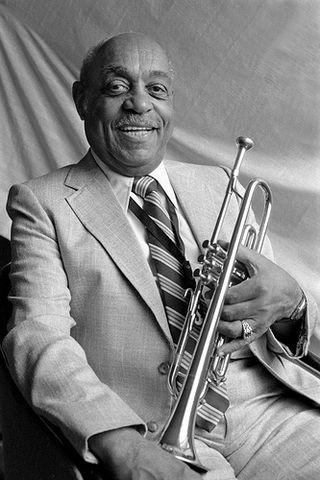
Bennett Lester Carter was an American jazz saxophonist, clarinetist, trumpeter, composer, arranger, and bandleader. With Johnny Hodges, he was a pioneer on the alto saxophone. From the beginning of his career in the 1920s, he worked as an arranger including written charts for Fletcher Henderson's big band that shaped the swing style. He had an unusually long career that lasted into the 1990s. During the 1980s and 1990s, he was nominated for eight Grammy Awards, which included receiving a Lifetime Achievement Award.
Leonidas Raymond Young was an American jazz drummer and singer. His musical family included his father Willis Young and his older brother, saxophonist Lester Young. In 1944 he played with Norman Granz's first "Jazz at the Philharmonic" concert.
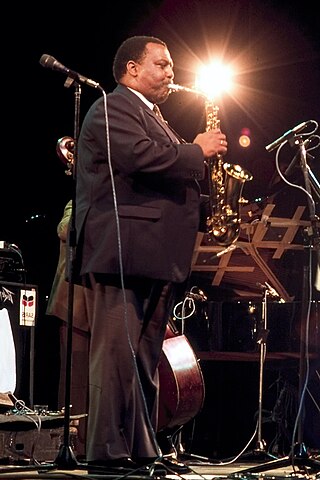
Arthur Murray Blythe was an American jazz alto saxophonist and composer. He was described by critic Chris Kelsey as displaying "one of the most easily recognizable alto sax sounds in jazz, big and round, with a fast, wide vibrato and an aggressive, precise manner of phrasing" and furthermore as straddling the avant garde and traditionalist jazz, often with bands featuring unusual instrumentation.

Horace Elva Tapscott was an American jazz pianist and composer. He formed the Pan Afrikan Peoples Arkestra in 1961 and led the ensemble through the 1990s.

Jon Jang is an American jazz pianist, composer, and bandleader. Of Chinese ancestry, he specializes in music which combines elements of jazz and Asian musics, and is known for musical works exploring international as well as Asian American social justice struggles.

European free jazz is a part of the global free jazz scene with its own development and characteristics. It is hard to establish who are the founders of European free jazz because of the different developments in different European countries. One can, however, be certain that European free jazz took its development from American free jazz, where musicians such as Ornette Coleman revolutionised the way of playing.
Hathut Records is a Swiss record company and label founded by Werner Xavier Uehlinger in 1974 that specializes in jazz and classical music. The name of the label comes from the artwork of Klaus Baumgartner. Hathut encompasses the labels hat ART, hatOLOGY, and hat NOIR.
Loft jazz was a cultural phenomenon that occurred in New York City during the mid-1970s. Gary Giddins described it as follows: "[A] new coterie of avant-garde musicians took much of the jazz world by surprise... [T]hey interpreted the idea of freedom as the capacity to choose between all the realms of jazz, mixing and matching them not only with each other, but with old and new pop, R&B and rock, classical music and world music... [S]eemingly overnight new venues - in many instances, apartments or lofts - opened shop to present their wares." According to Michael Heller, "lofts were not an organization, nor a movement, nor an ideology, nor a genre, nor a neighborhood, nor a lineage of individuals. They were, instead, a meeting point, a locus for interaction." Heller stated that "loft practices came to be defined by a number of key characteristics, including (1) low admission charges or suggested donations, (2) casual atmospheres that blurred the distinction between performer and audience, (3) ownership / administration by musicians, and (4) mixed-use spaces that combined both private living areas and public presentation space." Regarding the music played in these venues, Michael J. Agovino wrote: "This was community music. Part of the point was that, free of the strictures of clubs, the music could be anything, go anywhere, go on for as long as it wanted." David Such stated that "the cutting contests, personality cults, and vices that characterized the jazz scene of the 1940s and 1950s were mostly missing." The scene was reviewed and documented by Giddins, Peter Occhiogrosso of the SoHo Weekly News, Leroi Jones, Robert Palmer, and Stanley Crouch.
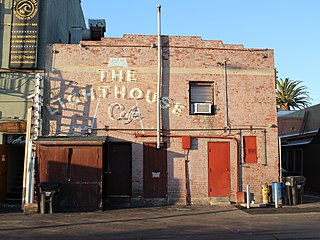
The Lighthouse Café is a nightclub located at 30 Pier Avenue in Hermosa Beach, California. It has been active as a jazz showcase since 1949 and, under the name "The Lighthouse", was one of the best known West Coast jazz clubs from the 1950s through the late 1970s. In addition to jazz, reggae to rock - among other genres of music - are now performed at the venue, including bookings of local artists such as Jett Prescott and George Stanford.

Thomas Jefferson High School, usually referred to as Jefferson High School, is a public high school in the Los Angeles Unified School District. Founded in 1916, it is the fourth oldest high school in the school district. Located in South Los Angeles, its surrounding communities are Downtown, Central-Alameda, Florence, Historic South-Central and South Park. Jefferson's school colors are kelly green and gold and the sports teams are called the Democrats, or Demos for short. In 2006, a pilot program called New Tech: Student Empowerment Academy began in the northeast portion of the school. New Tech has since become a separate charter school housed in the Jefferson building. In 2016 New Tech closed down and the available space is now used by Nava College Preparatory Academy a pilot school that was established in 2014.
William Douglass was an American jazz drummer born in Sherman, Texas. Douglass relocated to Los Angeles when he was six months old, becoming in his adulthood a popular Los Angeles musician who worked shows and sessions. Douglass provided drums for notable instrumentalists such as Benny Goodman and Ben Webster, as well as providing backing for vocalists such as Lena Horne and June Christy. He was also known for his work in the American Federation of Musicians, where he was an active proponent of desegregation. He held offices in local unions both before and after their racial integration.
Curtis Clark is a jazz pianist from Chicago, United States.
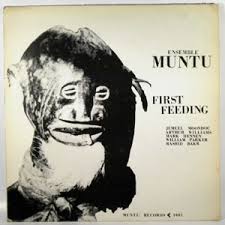
First Feeding is the debut album by American jazz saxophonist Jemeel Moondoc with the Ensemble Muntu, which was recorded in 1977 and released on his own Muntu label. The album was reissued in 2009 as part of the three-CD box Muntu Recordings on the Lithuanian NoBusiness label.
Barbara McCullough is a director, production manager and visual effects artist whose directorial works are associated with the Los Angeles School of Black independent filmmaking. She is best known for Water Ritual #1: An Urban Rite of Purification (1979), Shopping Bag Spirits and Freeway Fetishes: Reflections on Ritual Space (1980), Fragments (1980), and World Saxophone Quartet (1980).
Nate "Mrafu" Morgan (February 9, 1953 – November 21, 2013 was an American jazz pianist and composer.
Marcus McLaurine is an American jazz bassist, composer, and educator.
Tammy L. Kernodle is a musicologist and the former President of the Society for American Music (2019–21). Her academic writing and public intellectual work has highlighted Black women musicians like Mary Lou Williams, Meshell Ndegeocello, Alice Coltrane, and Melba Liston and has considered African American women's role in contemporary gospel music and jazz.
References
- 1 2 Charles Hiroshi Garrett, ed. (2013). "Union of God's Musicians and Artists Ascension" . The Grove Dictionary of American Music (2nd ed.). Oxford University Press. ISBN 978-0-19-531428-1.
- ↑ Isoardi, Steven L. (2001). The New Grove Dictionary of Music and Musicians. Oxford: Oxford University Press. ISBN 0-333-60800-3.
- 1 2 Ratliff, Ben (1999-03-03). "Horace Tapscott, Jazz Pianist And Community Advocate, 64". The New York Times. ISSN 0362-4331 . Retrieved 2017-03-09.
- ↑ "Musikurlaub Lexicon".
- ↑ "Finding Aid for the Horace Tapscott Jazz Collection 1960-2002". www.oac.cdlib.org. Retrieved 2017-03-09.
- ↑ "Jazz legend Nate Morgan dies of heart failure" . Retrieved 2017-03-09.